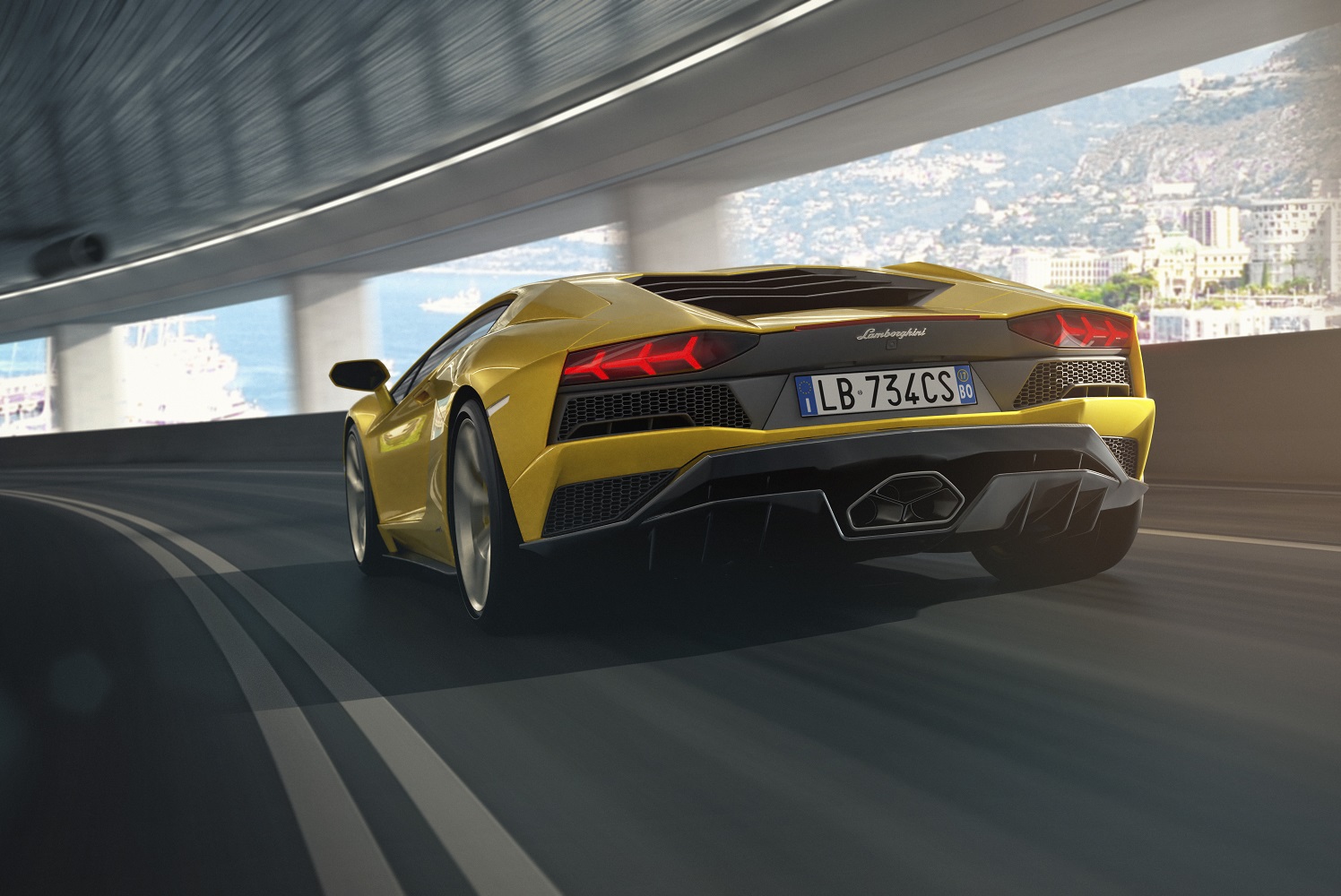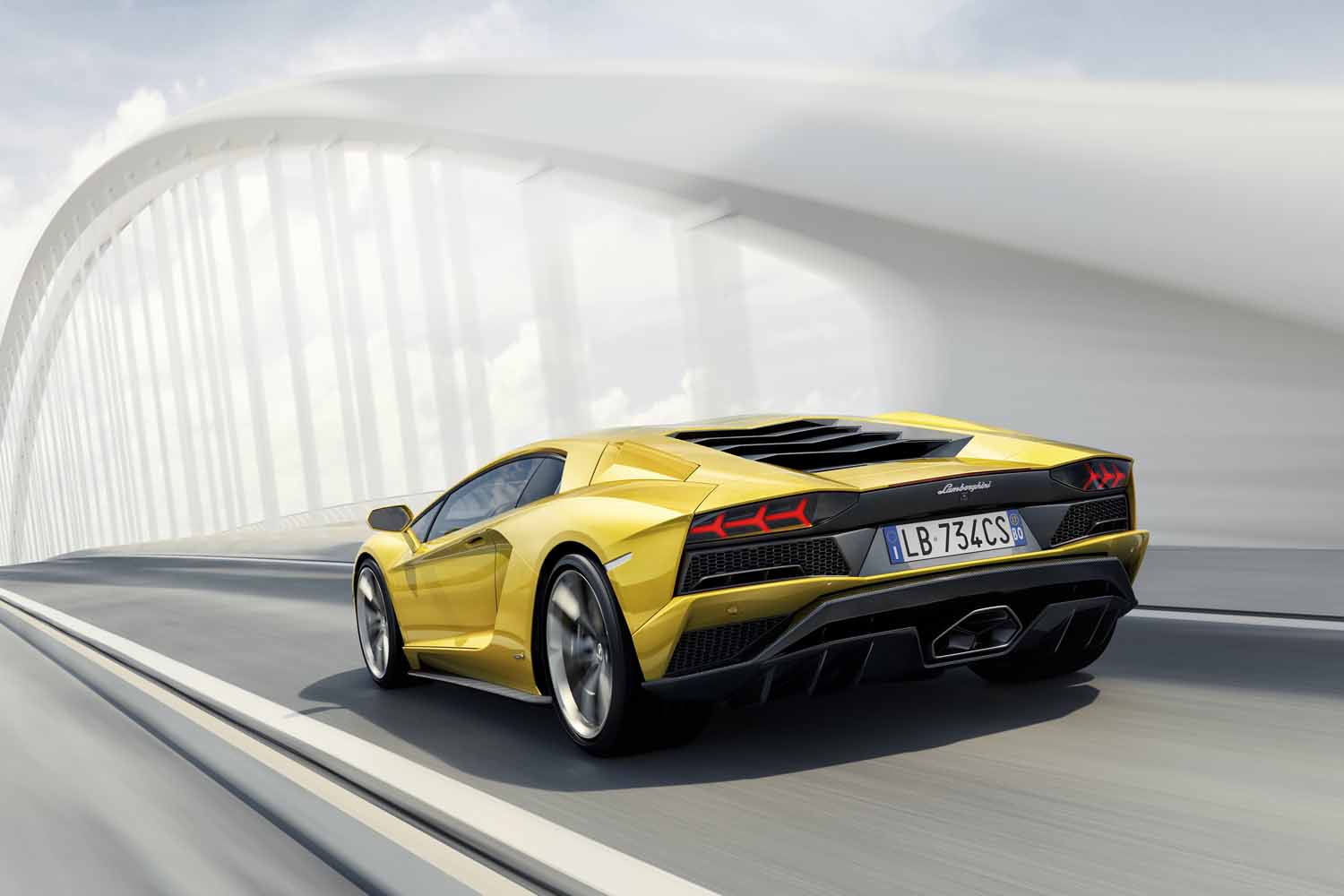Lamborghini’s Aventador flagship has received comprehensive upgrades that make it faster, sharper to drive, and more muscular-looking than ever before. The updated model adopts the Aventador S nameplate.
The S carries on with its predecessor’s hand-built, naturally aspirated 6.5-liter V12 engine, but its output has been bumped by 40 horsepower. Mounted between the rear fenders, the 12-cylinder generates 740 horsepower and 508 pound-feet of torque. The coupe rockets to 62 mph from a standstill in 2.9 seconds, and it goes on to a jaw-dropping top speed of 217 mph. Huge carbon ceramic brakes come standard to slow things down with no fuss.
A seven-speed independent shift rod (ISR) transmission spins all four wheels. Fuel economy is kept in check by a start/stop system, and a cylinder deactivation function that shuts off six cylinders when the V12’s full output isn’t needed. The S tips the scale at 3,472 pounds thanks in part to the extensive use of carbon fiber.
The Strada, Sport, and Corsa driving modes are joined by a fourth profile named Ego. Ego lets the driver design a custom, personalized mode by manually dialing-in the settings of the steering rack, the suspension, the transmission, and the throttle response, among other functions. An active suspension improves both ride and handling regardless of which mode is selected, and Pirelli developed P Zero tires specifically for the S.
The Centenario‘s trick four-wheel steering has trickled down to the Aventador S. Offered on a regular-production Lamborghini for the first time ever, the system turns the rear wheels in the opposite direction of the front wheels at low speeds to greatly reduce the turning radius. At higher speeds, the rear wheels turn in the same direction as the front wheels to make the Aventador more responsive and more stable. The benefits are perceptible on the road and on the track.
The Aventador’s wedge-shaped silhouette carries on unchanged. However, Lamborghini’s designers have penned a new, sleeker-looking front bumper that optimizes air flow, and a redesigned rear fascia with four air vents instead of two large ones. The thinner vents emphasize the coupe’s width. Three round exhaust outlets flanked by a new air diffuser add a finishing touch to the look. The design was tweaked in a wind tunnel; Lamborghini explains the S offers 130 percent more front downforce than the standard Aventador.
Inside, the passengers are treated to a digital, fully configurable instrument cluster, and a state-of-the-art infotainment system that’s compatible with Apple CarPlay. The list of options includes a clever built-in app that lets the driver record information such as lap times and G force.
The 2017 Lamborghini Aventador S will begin arriving in showrooms in the spring. Pricing starts at $421,350. The Aventador Roadster is expected to receive the same modifications as its coupe sibling in a few months’ time.
Editors' Recommendations
- Samsung’s new display tech makes the Galaxy S21 Ultra even more power efficient
- 2020 Nissan Titan pickup truck gets more powerful engine, tech-filled interior
- Powerful upgrades turn 4th-gen Raspberry Pi into a more capable $35 desktop










